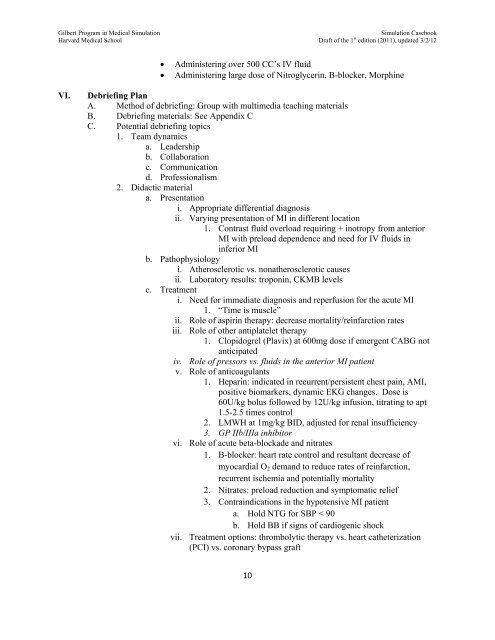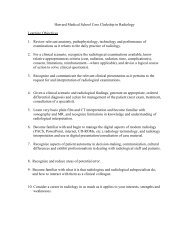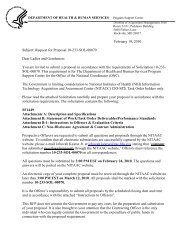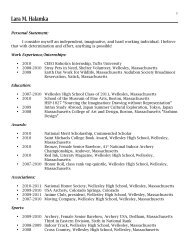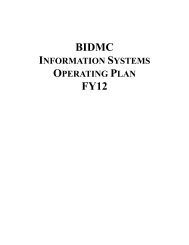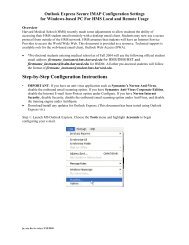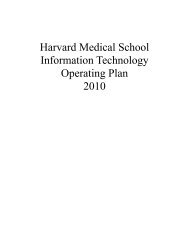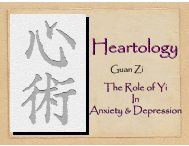SIMULATION CASEBOOK - MyCourses
SIMULATION CASEBOOK - MyCourses
SIMULATION CASEBOOK - MyCourses
You also want an ePaper? Increase the reach of your titles
YUMPU automatically turns print PDFs into web optimized ePapers that Google loves.
Gilbert Program in Medical Simulation<br />
Simulation Casebook<br />
Harvard Medical School Draft of the 1 st edition (2011), updated 3/2/12<br />
<br />
<br />
Administering over 500 CC’s IV fluid<br />
Administering large dose of Nitroglycerin, B-blocker, Morphine<br />
VI.<br />
Debriefing Plan<br />
A. Method of debriefing: Group with multimedia teaching materials<br />
B. Debriefing materials: See Appendix C<br />
C. Potential debriefing topics<br />
1. Team dynamics<br />
a. Leadership<br />
b. Collaboration<br />
c. Communication<br />
d. Professionalism<br />
2. Didactic material<br />
a. Presentation<br />
i. Appropriate differential diagnosis<br />
ii. Varying presentation of MI in different location<br />
1. Contrast fluid overload requiring + inotropy from anterior<br />
MI with preload dependence and need for IV fluids in<br />
inferior MI<br />
b. Pathophysiology<br />
i. Atherosclerotic vs. nonatherosclerotic causes<br />
ii. Laboratory results: troponin, CKMB levels<br />
c. Treatment<br />
i. Need for immediate diagnosis and reperfusion for the acute MI<br />
1. “Time is muscle”<br />
ii. Role of aspirin therapy: decrease mortality/reinfarction rates<br />
iii. Role of other antiplatelet therapy<br />
1. Clopidogrel (Plavix) at 600mg dose if emergent CABG not<br />
anticipated<br />
iv. Role of pressors vs. fluids in the anterior MI patient<br />
v. Role of anticoagulants<br />
1. Heparin: indicated in recurrent/persistent chest pain, AMI,<br />
positive biomarkers, dynamic EKG changes. Dose is<br />
60U/kg bolus followed by 12U/kg infusion, titrating to apt<br />
1.5-2.5 times control<br />
2. LMWH at 1mg/kg BID, adjusted for renal insufficiency<br />
3. GP IIb/IIIa inhibitor<br />
vi. Role of acute beta-blockade and nitrates<br />
1. B-blocker: heart rate control and resultant decrease of<br />
myocardial O 2 demand to reduce rates of reinfarction,<br />
recurrent ischemia and potentially mortality<br />
2. Nitrates: preload reduction and symptomatic relief<br />
3. Contraindications in the hypotensive MI patient<br />
a. Hold NTG for SBP < 90<br />
b. Hold BB if signs of cardiogenic shock<br />
vii. Treatment options: thrombolytic therapy vs. heart catheterization<br />
(PCI) vs. coronary bypass graft<br />
10


